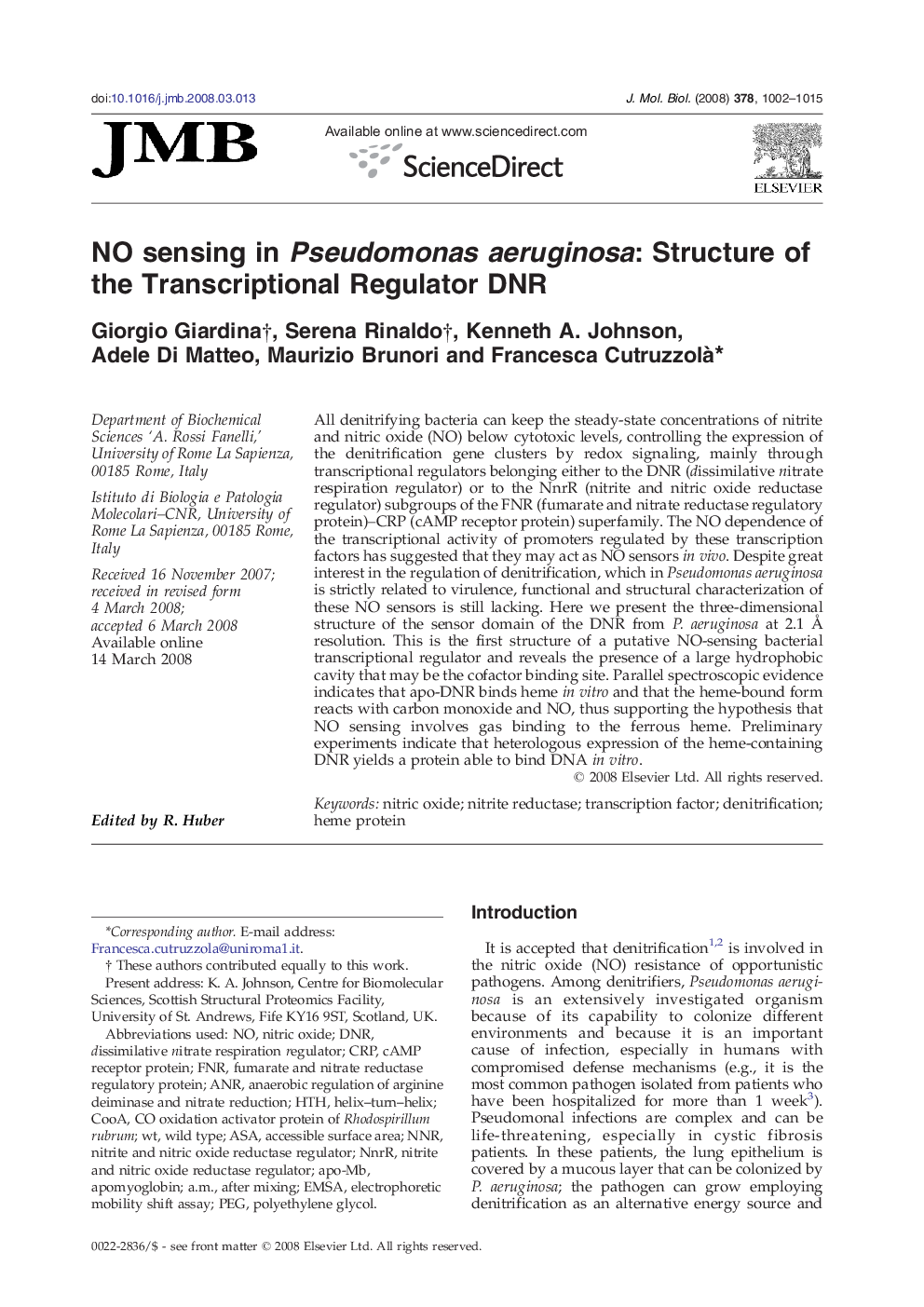| Article ID | Journal | Published Year | Pages | File Type |
|---|---|---|---|---|
| 2187571 | Journal of Molecular Biology | 2008 | 14 Pages |
All denitrifying bacteria can keep the steady-state concentrations of nitrite and nitric oxide (NO) below cytotoxic levels, controlling the expression of the denitrification gene clusters by redox signaling, mainly through transcriptional regulators belonging either to the DNR (dissimilative nitrate respiration regulator) or to the NnrR (nitrite and nitric oxide reductase regulator) subgroups of the FNR (fumarate and nitrate reductase regulatory protein)–CRP (cAMP receptor protein) superfamily. The NO dependence of the transcriptional activity of promoters regulated by these transcription factors has suggested that they may act as NO sensors in vivo. Despite great interest in the regulation of denitrification, which in Pseudomonas aeruginosa is strictly related to virulence, functional and structural characterization of these NO sensors is still lacking. Here we present the three-dimensional structure of the sensor domain of the DNR from P. aeruginosa at 2.1 Å resolution. This is the first structure of a putative NO-sensing bacterial transcriptional regulator and reveals the presence of a large hydrophobic cavity that may be the cofactor binding site. Parallel spectroscopic evidence indicates that apo-DNR binds heme in vitro and that the heme-bound form reacts with carbon monoxide and NO, thus supporting the hypothesis that NO sensing involves gas binding to the ferrous heme. Preliminary experiments indicate that heterologous expression of the heme-containing DNR yields a protein able to bind DNA in vitro.
